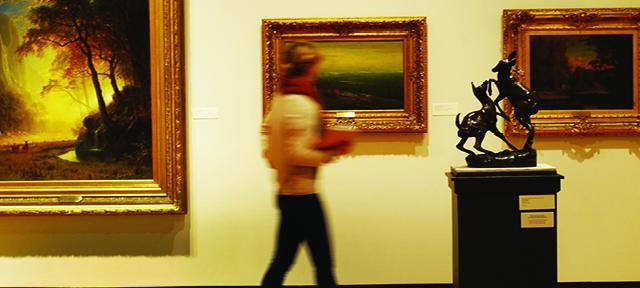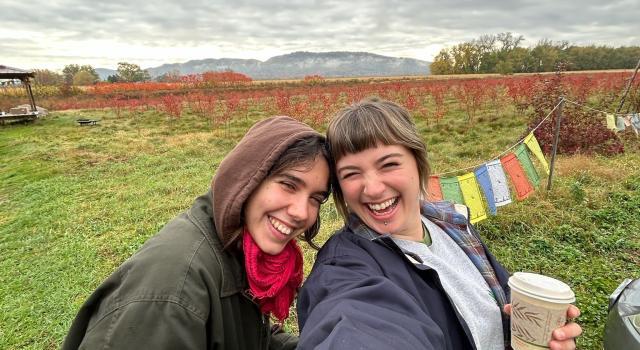In her Div III, Laura Howard beams in on the shady world of museum acquisition

To view some of the greatest art heists in history, just visit a museum.
You’ll see statuary from the Acropolis on display at London’s British Museum, for example, and other priceless artifacts scattered across the globe, displaced from the cultures that created them.
Although museum curators would say they “acquire” these pieces, their countries of origin sometimes have a more contentious word: theft.
Laura Howard, who graduated in May, is driven by a commitment to improve the ethical conditions of museum acquisition and a concern for the detrimental impacts of art crime. “There’s a nasty history to the collection of art,” she says, “and it wasn’t until 1970 that there was any basis for the return of antiquities.”
In 1970, the United Nations Educational, Scientific and Cultural Organization (UNESCO) held a watershed gathering, the Convention on the Means of Prohibiting and Preventing the Illicit Import, Export and Transfer of Ownership of Cultural Property. It was at this convention that experts began defining stolen cultural property and creating laws for its return.
“There are still a lot of stolen goods circulated on the market,” says Howard.
In her 81-page Div III thesis, “It’s Complicated: Three Cases in Provenance Research and Acquisition Ethics,” Howard writes about “the professional obligations and practices that surround the acquisition and display of potentially illicit art and archaeological material.”
Her Div III committee was chaired by Sura Levine, dean of the School of Humanities, Arts, and Cultural Studies and professor of art history, who was Howard’s adviser for all four years at Hampshire. Other members were Christoph Cox, professor of philosophy; Jeffrey Wallen, professor of comparative literature, humanities, arts, and cultural studies; and Laetitia La Follette, associate professor and chair of the department of ancient art and archaeology at the University of Massachusetts Amherst.
“When I was writing my thesis,” says Howard, “Jeff was in Berlin. It didn’t matter that we were miles apart; even though he was six hours ahead of me, he kept in touch, and he told me what cases were coming up.”
There’s another dark side of museum acquisitions, says Howard, and that’s forgery. To learn more about spotting faked masterpieces and dealing with other vagaries of the art world, she’s spending the summer in Italy’s Umbria region, earning a postgraduate certificate in the study of art crime and culture heritage protection.
The ten-week program was created more than a decade ago by Research into Crimes against Art (ARCA). Taught by experts from across the world, the program offers such courses as Art Crime and War; Insurance Claims and the Art Trade; and the High Stakes World of Art Policing, Protection, and Investigation.
Howard had interned at ARCA during her Div II summer. Now she says it’s giving her unparalleled exposure to the field of art crime.
“In my first year at Hampshire, I wanted to study classics,” Howard says. “Then I switched to art history, and I had a crisis of conscience when I learned that a lot of museums own stolen art. Some have financial interests that conflict with their mission and even deal with criminal syndicates selling stolen art and forgeries. I was grossed out.”
Instead of turning her back on art history, Howard — in full Hampshire mode — redirected her studies to suit her passion. “If you don’t like your discipline, you should be a part of changing it,” she says.
She’ll return to Hampshire in mid-August and start prepping for applications to graduate school, and will also be working on a 30-page thesis, due in November, for the ARCA program.



